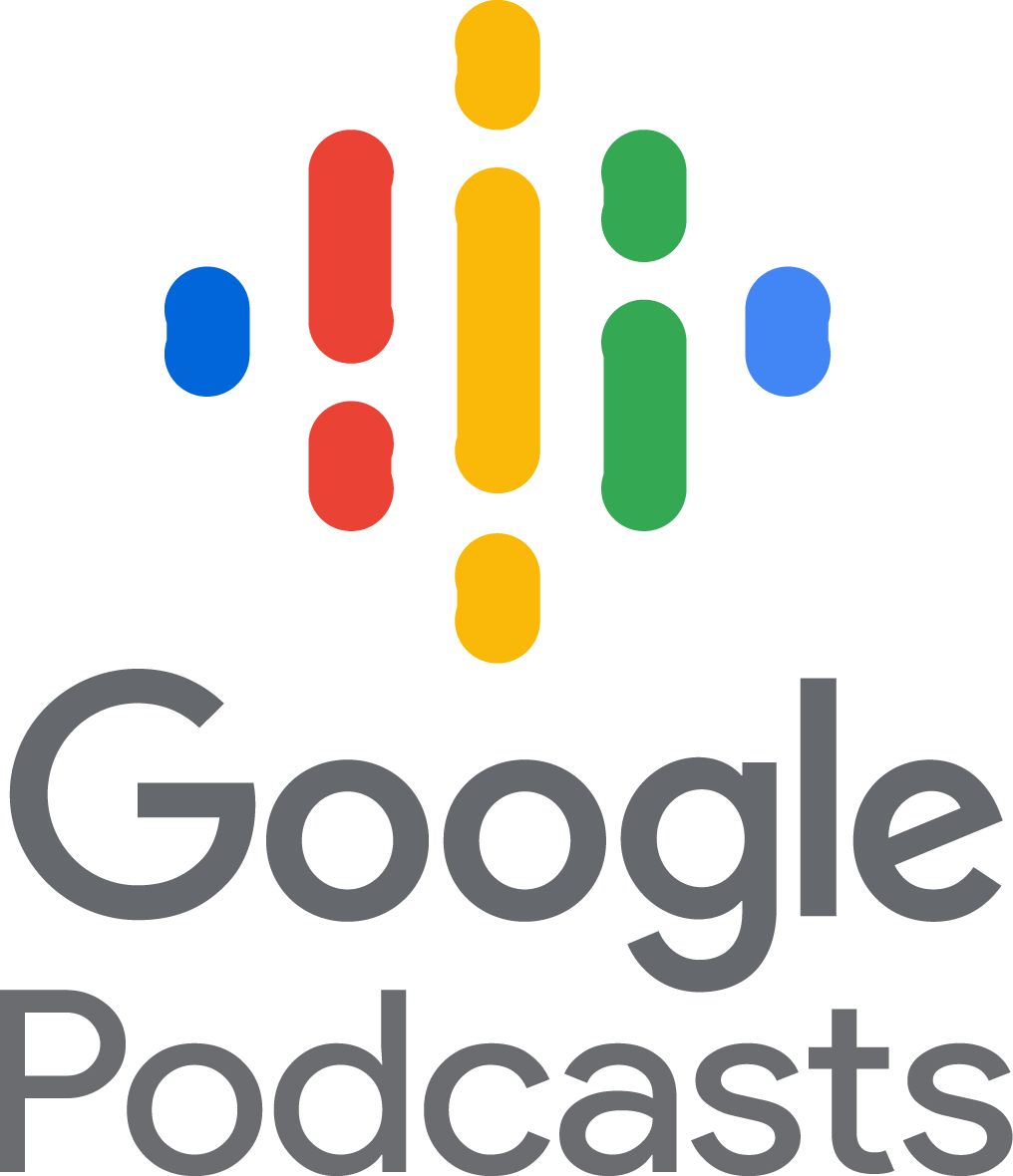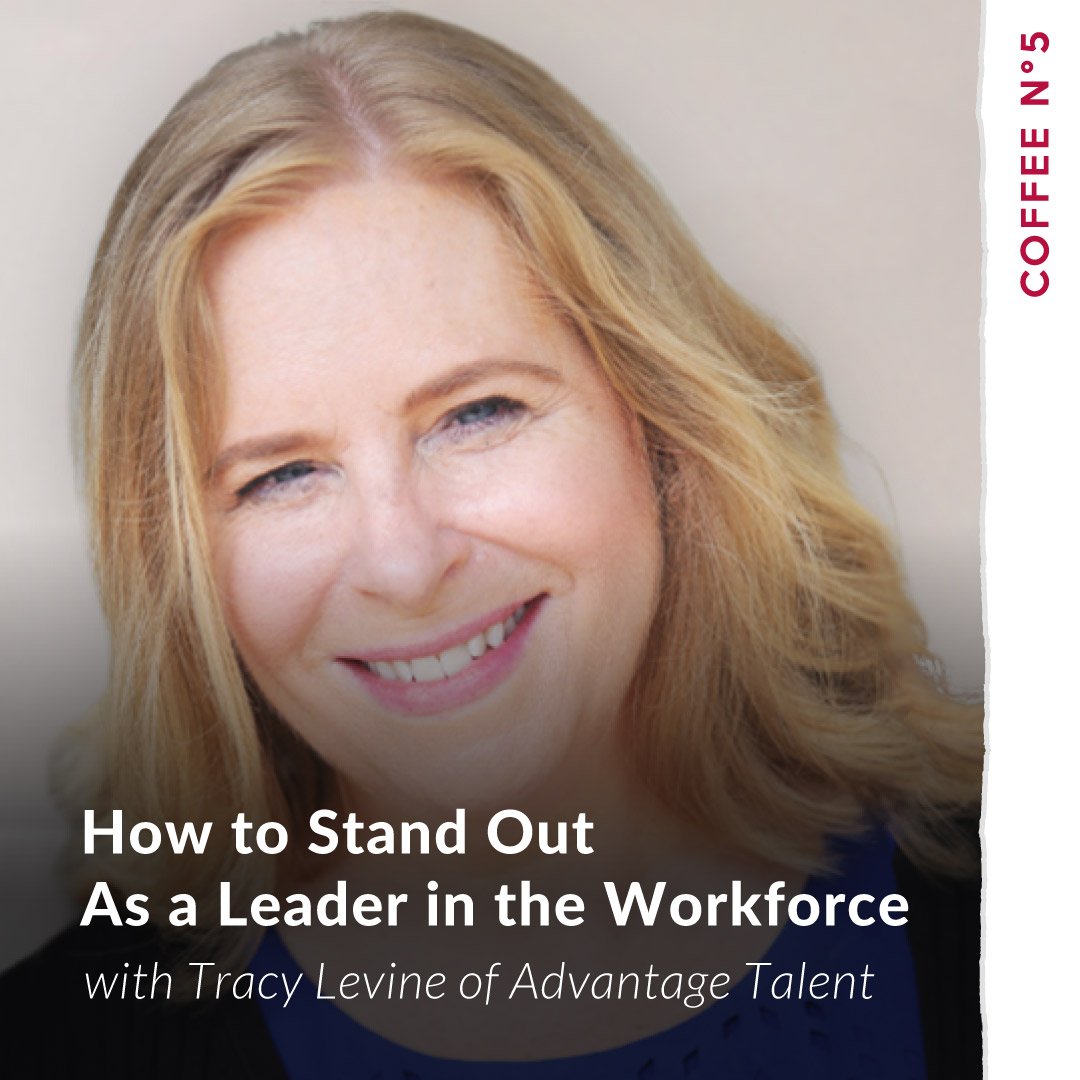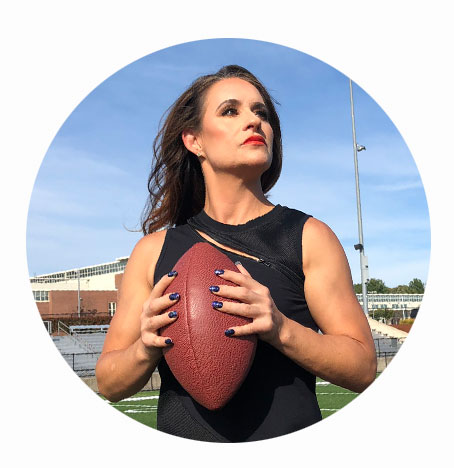Lara Schmoisman 0:04
Hello, guys, welcome back to coffee number five. And, you know, guys, I’m a geek, you know that I know that we’re not going to hide it. And I love to learn. And I always try to be in the new trends. And when I find something that is fascinated, I want to deep dive and learn, learn, learn, learn, but this is what happened, everything in my career that I was kind of a pioneer of this digital era. As you guys know, my first website was 1999. So that was a long time ago. And so I had to learn a lot of things by trial and error. Because there was no manual, there is nobody to teach us to do that. That’s also why I became a professor of digital marketing at some point in my life. And I try to teach you and to give you all this information and to bring it from the right sources. Because what also happened in this digital world, there is a lot of rumors, and there’s people talking, and everyone believes that they know what they’re doing. But the truth is that this ecosystem is changing so fast all the time, that and it’s great, because it keeps me on my tippy toes. And I have to be always learning. But today I want to talk about influencer marketing, it seems like it’s a new trend. A lot of you are asking how to work with influencers. I seen a lot of amazing platforms, how they are. And but again, there is no manuals, but there are some people who know a little more than others. And today I want to welcome Jason Falls, who is crystals problems, he solves a lot of digital problems. And Welcome to Coffee number five, Jason Lara. It’s great to be here. I’m I’m happy to be here. And hopefully I can be useful to your audience. I’m sure you’re well. So Jason, tell me a little bit. How did you get here where we are today, let’s give that information to our audience so they can get to know you a little?
Jason Falls 2:03
Sure. So I started tinkering around on the internet when I was in high school. And this was the you know, late 1980s, early 1990s. And then as I moved on into college and whatnot, I became a public relations professional. I was in the sports industry as a PR person for about 15 years. But I was constantly I was I was at the small colleges and universities where we didn’t have websites. And so someone had to build the first athletic website for that school. And I ended up building several of the first athletic websites through the mid to late 1990s into the early 2000s. So you’re not been around doing this for about the same amount of time. Yeah, and we weren’t. We weren’t learning together, basically, we were and so but but I spent 15 years in the world of PR. And then I moved out into advertising and marketing and kind of mainstream PR in 2005. And that was right when social media was starting to become relevant for businesses. And so because I had been basically playing on the internet and had built some websites and kind of knew what was happening on the internet, as a PR person, someone who tries to get you know, media outlets to talk about your product or service to their audiences. I found myself in a situation where I was advising clients on using social media and advising my PR clients on well how do we reach out to bloggers which was kind of what we used to call influencers you know, it was it was blogger outreach. That’s how we started Yeah, it was blogger outreach back in the day. Also remember blogs are still very in and help us with SEO, you guys so they are on we talked about this a lot of times so then what happened in your life you were working with bloggers and influencer? Yeah, so I was I was doing a lot of blogger outreach and things like that for my clients and then I kind of kind of morphed into a more broad social media marketing social media strategy position bounced around from a couple agencies I spent some time on the brand side as well. But the entire time that I’ve been working in the digital space I’ve really been that person who tries to find that influential media outlet maybe it’s a traditional media outlet maybe it’s an influencer someone with a lot of followers on on the on some social network and try to you know, work through them to communicate to their audience some message about my brand, my product my client.
Lara Schmoisman 5:00
And so to me, influencer marketing is not from a logistical perspective any different than public relations or media relations, the environment. I love that is saying that because I always treat influential marketthing, I’m from my agency, we always treat it as a PR tool, not a social media tool. They’re completely different skills. Exactly right. I think the mechanism is the same, but the environment is a little different. So in order to be successful as an influencer marketing person, you have to remember that traditional media members, producers, editors, writers, et cetera, journalists, probably went to journalism school, where they were trained that there was a separation of church and state, there was the editorial side, and there was the advertising side. Well, influencers, online influencers, social media basically gave everybody the opportunity to become their own publisher. And none of those people went to journalism school, they don’t understand the separation of church and state. And so the difference is, for an online content creator, influencer, that’s how they make their living. That’s how they feed their kids. So if you go to them from a PR perspective, a traditional PR perspective and say, Hey, here’s the information that your audience should appreciate, will you use it? They’re going to turn around and say, Well, how much are you going to pay me. And so for a while there, there’s been a conflict between traditional thinking in terms of PR media relations, and influence marketing. So you have to kind of broaden your perspective a little bit as a marketer and say, okay, they want to be paid, or they want to get product, or they want to, you know, we have to handle them a little differently than we used to handle, you know, media outlets. But if you look at the value that you’re getting back from those influencers, you start to understand that they are worth the investment, if you choose the right ones. Exactly. And that’s what’s my next question, because I always believe in metrics. I’m, again, we’re like we already said, and we need to measure we need data. What metrics do we use to work with influencers? Well, it always depends on your goals, and you everything you do, whether it’s influencer marketing, or pay per click, or any other type of marketing, you have to always start with what’s our goal? What are we trying to do? And then who are we trying to reach? Who’s our audience? And so if you answer those two questions, all the dominoes sort of fall in line behind that. So if your goal is we want to create awareness about a new product, then you’re going to measure awareness, metrics and awareness metrics are not dollars and cents awareness metrics are how many people see the message, how many people learn and understand and repeat the message? What’s our reach? How many people are engaging with the content, those are awareness metrics, if your ultimate goal obviously, is always going to be to sell more things. But if you you have to start out with the goal of we want to drive more revenue, drive more sales, through this, you know influencer channel, if that’s your goal, that’s fine. And so you measure those things, you have to measure how much traffic did we get to our website, or to our stores from this influencer? That can be tricky, but you can do it. How much of that traffic actually bought something? What did they spend, what was their average order value, etc. What’s the lifetime value of that customer, you can do all that math with influencers, you just have to make sure that you are giving influencers, the right tools to send people to your store or to your website to purchase so that you can track it. And everything is trackable to a degree you just have to kind of plan to measure from the first. Yeah, I this is something that I see like a lot of people think that they can use influencers for instant conversions without talking about brand awareness. And that’s where the PR part and why why I think it’s so important that we connect with,
with our influencers, from the PR standpoint, we need to find influencers that are really going to be like even good brand ambassadors for the name of our company. And we need to think about that go back in time and think about that traditional PR, that that’s what actually those mediums will give us that is the authority is not always about reading that purchase. And you said it perfectly breaks it down so well about understanding our goal. And it’s not immediate, it doesn’t happen immediately. And also say something that it’s relatively new, but it’s becoming very, very common that those influencers also want to do affiliate, right. Yeah, it’s it’s interesting. It’s interesting to see that and you’re right, you you kind of have to lay the foundation for your brand and make people aware of who you are. And influencers are really good at awareness. You can use them very, very easily to create some sort of buzz about your brand because if they’re talking about your brand, your product or service and how much they love it and how much they enjoy it, then they’re the audience is not necessarily going to be ready to go purchase it right now. But they’re at least going to become more familiar with you so that after they hear your name the third or fourth time
Jason Falls 10:00
time, maybe then they’re, they’re predisposed to purchase. However, if you have a really good product or a really good offer, you can still drive direct revenue. Like I’ve always told people before, if you are a makeup brand, if you sell lipstick, and you want to sell, you know, 100,000 units by next Friday, then plop down a half a million dollars and have Kim Kardashian post about your lipstick, and you’re probably gonna sell a ton of them. So it can be used that way. But those are those very, very, you know, sort of fringe examples that only happen once in a while. Well, but also you have to have that million dollars, that’s true, you gotta have the money. Exactly. And that’s a lot of people that they don’t understand a lot of businesses out there that it’s gonna cost him money to make money. Yeah.
I’m not free, because that’s they were their content creators, and they’re gonna endorse your brand. So you need to make sure that you give them the best tools you can for them to understand your brand. And also something that I personally believe is that you need to nobody knows their audience better than the influencer. So you cannot tell them exactly what to do, the only thing you can do is to make them understand your values and your brand. Yeah, that’s true. The two, the two things that most businesses and brands don’t quite get about influence marketing is number one, you’re right, the influencer is ultimately needs to be in control. You can’t go in and dictate how they talk about your brand, exactly what they say. You don’t get to edit their videos or anything like that. You give them the framework that they need to create the content that their audience is going to love, based on what they know and understand about your brand. sure that most of them will give you some editorial input and whatnot. But they have to be in control. If you’re in control, you don’t know their audience, you don’t know how to talk to their audience really well. So you’ve got to give them control of the editorial content. The second thing that brands don’t always get is influencer partnerships are true partnerships. The ones that work really, really well are the ones where it’s a long term commitment, where you’re working with an influencer or a content creator for 369 12 months, and you’re constantly feeding their audience information about your product or service, so that you not only get the reach that influencers can bring you, but you also get the frequency. And when those two things collide, well, that’s advertising success. So that’s also influencer marketing success. And that’s, I think, the best tool because we always know that the best marketing tool is word of mouth. It is so getting an influencer to not only of course, it’s their job, but you need to they need to believe in what they’re selling. If they don’t believe them, they don’t trust you don’t want to work with that influencer. Yeah. And think about that for a second how, how hard or how easy do you think it is to have somebody believe in your product and love you with a one one off exchange, hey, here’s, you know, $500, please post about bout us on Instagram, that influencers not going to care one bit about your brand, they’re just going to take the $500 make the post and move on with their life. But if you’re saying hey, why don’t we partner so that we’re giving you a little bit of money every month for the next six months to talk about our product with you’re in a recurring way to your audience. Now all of a sudden, sudden that influencer or content creator is invested in your company and your brand, they want to tell their audience about you, because you’re a you’re paying them, you know, probably handsomely to do it. And be they want to make sure that that content is authentic, they don’t want to lose the attention of their audience. And so they’re really going to invest the time to get to know you better. So think about those long term relationships versus just a one off sponsored post. And also, you need to find who’s the right fit for your brand. No shots, go for the budget. Don’t go. I mean, there are many things. So you, like us, Jason said really wisely show us now it’s a partnership is a true partnership. So it’s a conversation that you need to have for influencer, not just going to a platform, which are many of those which are played platforms, but that platform might give you the information about the influence or the rate or those things but you really I don’t know I will say old school, pick up the phone and talk to them get to know in the Good Feet and if you click with that person, because that person is going to be somehow the face or the reference of for your brand. Yeah, the long and short of it is when you find an influencer that might be right for your brand. In order to know whether or not they are you really have to do a deep dive into them into their content. You have to see how do they talk does the voice and the tone that they use align with your brand? What is that what are their videos look like? What are their images look like? Are they consistent? Are they consistently really really good and hot? Quality? Or do they do a lot of you know, random camera stuff where they’re out of focus and things like that? And how does that compare to your brand? If you you want the visual, you want their their voice and their tone, you want everything to align as well as possible. And then you’ve got to like you said, Lara, you got to get to know them a little bit better get him on the phone, talk to him a few times and say, Hey, are we going to vibe, you know, is this going to work? And you get the feel for that just like you would with any other partner?
Lara Schmoisman 15:00
Absolutely. And I will go even deeper than that, you need to get to know a lot of their outings, I will look at the comments how they engage with their audience. For me, engagement is super important and influencer, who has a lot of years, it’s great. But if they don’t have that good engagement is not going to work for me personally as an as marketers. Yeah, there’s a lot of people who, you know, like the Instagramers, who have a lot of followers. But if you actually look into the comment section of those posts that they post, you’ll see less, let’s say, you’ll see 47 comments, but none of them are actually from the influencer themselves. That’s someone who’s not having a conversation with their audience, they might drive a level of engagement, that’s pretty interesting to you, they might get a lot of comments a lot of likes, but if they are not actively participating with their audience, that’s really the difference between a content creator that just creates content, and a content creator who actually has influence over their audience, because they’re constantly going back and forth with them and building that sense of community. Okay, but also, I want to give tips to our audience here about short term tips or
strategies that we can use as a low budget influencers, I always believe, like a giveaway is a great way for to to promote our product, but I won’t do it with one influencer, you need to make sure that you work with several influencers the same time to have a fair giveaway and have interesting rules, or if you have a promotion. Also, but you just cannot do it with one influence, I believe in doing it multiple, because you never know what can happen.
Jason Falls 17:07
Sure. Well, I mean, I think the short term, you know, sort of low cost tips that I would give you is, first of all, if you haven’t started, if you haven’t done anything, with an influencer yet, just start with one, find the one one that you really liked their content, you think they’d be a good partner, and just reach out to them and have the conversation, hey, I love your content, I’d love to see if we could partner somehow. So that you can tell your audience about my product and see what happens, it may or may not work out, but just start with one and then expand from there once you sort of get the feel for it. And it’s really about finding those content creators out there that create interesting content that aligns with your brand, and that engage their audience around their content and get those engagement rates. Now, there are some tools out there that you can use that are low cost or free. One of my favorites that I’ve been testing lately is called Scipio, it’s ceipi o.ai. And it Scipio, you can actually go in and say I’m looking for 25 year old men who love fashion who live in California, and it will go out and basically bring up a grid of Instagram photos that meet that criteria. So it’s using artificial intelligence to find what you’re looking for. And then you go and click that grid of the photos on that grid that you like. And then it produces a list of here’s some potential influencers that you could go look at. And that’s free to use, you don’t have to pay anything to do that, that element of it. There are some, you know, paid things that it does, beyond that you can look into, but that’s one that’s that’s free to use. I often times will go if I’m looking for a short term fix on an influencer, for a client, I’ll just go to Instagram or Tiktok, type in a hashtag and just start looking at the content, who’s who’s producing good content. I’m not as much worried about how many fans or followers they have. Because if they’re producing good content, two things can happen. Number one, if you find somebody that doesn’t have a lot of followers, but you love their content, and you start partnering with them now, then as they grow, you’re gonna have a really good relationship. Yeah, you’re gonna grow with them. The second thing is, is you can always put paid spend behind their content, you can go to them and say, Hey, can I pay you $500 To put a you know, a paid spin behind that post so that it gets out in front of more people. Or you can get their permission to whitelist on certain platforms, and you can put the paid spin behind that particular piece of content, get their permission to let you use their content on your channel, that kind of thing. So the number of followers is not as relevant as it used to be. Certainly you want someone that’s got good impact, but if you’re just starting out, find someone with a few 100 Or maybe a few 1000 followers and grow with them and that will be a really good investment of your time. Absolutely.
Okay. Any thoughts on giveaways and promotions? And how influencers? Yeah, giveaways and promotions are pretty cool, especially with those, you know, lower level micro nano influencers, a lot of the people who have under, let’s say, 10,000 followers, a lot of those folks don’t really even realize they’re influencers yet. So you can reach out to them and say, Hey, I’ve got a bunch of free product to giveaway, would you like to do a giveaway to your audience, I’m happy to partner with you and send you some free product to give away. A lot of them will do that just because a they think it’s cool that a brand is talking to them, because again, they don’t think they’re that big yet. And be they get to give something to their audience, which is awesome. So yeah, if you can do that, if you can organize that and find influencers that want to do that. That’s a really good approach.
Lara Schmoisman 20:45
Yeah, I’m so before we go, because I know you guys have been listening to this really intensely. And there’s only so much information you can take at the time because it happens to me. And we are giving you a lot of information here. But I want to touch on affiliates. affiliates in right now. So how do we work with affiliates? Because it’s one thing is to be an influencer? And another thing is that we in any influencer affiliate, right?
Jason Falls 21:02
So affiliate marketing is popular with brands, because basically the concept is I’m not going to pay you until you drive sales. The problem that that that poses for content creators and influencers is when you work with an influencer, you’re paying for three things, you’re paying them for their content, which you can use on your channels, if you negotiate it that way. You’re paying them for access to their audience, which is obviously why influencer marketing exists because they have an audience you want to get to. But the third thing is you’re paying them for their time. And that time is valuable. So content creators and influencers don’t typically care for affiliate marketing, because they are going to invest a ton of time and in the Create really great content, and they’re going to give you exposure to their audience. And if the audience doesn’t care for the product or doesn’t convert, then they’re not going to make any money. Right. And so they’re they’re much more willing to say yes to someone who’s like, hey, I want to pay you to create the content, and I want to pay you for your time. But then for access to your audience, let me add an affiliate thing on to that so that you can make even more money than I’m willing to pay you. So there has to be kind of a meeting of the of those two concepts. For a typical content creator, especially one that’s considers themselves an influencer and charges for what they do, there has to be a little bit of a compromise there because they’re not going to work for free, you’ve got to start out by saying, Look, I’m gonna pay you for your time to create this content, I’m gonna pay you for the content, some sort of fee there. But then where you can really make a lot of money is if you also become an affiliate, and consistently talk about this product. If your product aligns really well with them and their audience, and it’s a product that they can really get behind then you can have really good affiliate success but very few content creators slash influencers out there will take a straight affiliate commission for payment for what they do because that’s how they pay their bills and they can’t count on their audience always converting. Yeah, that’s just remember you guys brand awareness is key. But also brand awareness is gonna cost money is not for free. If you want to work is like I the influencer marketer, marketing is not for free, it’s gonna cost me to park the part of your budget that you put for advertising, you need to keep in mind you prefer to these are totally personal choices and are part of your strategy you want to put ads for.
For cost. You need to work with influencer forecasts, you need to say how it’s played, how it works for you, but also need to be part of your strategy and how you work find out where your audience is. Just make a plan. So before we go, Jason, I want to talk about a little book out there that is called Winfluence.
Jason Falls 24:17
Yeah, well, yeah. When? Yeah, Winfluence is my book about influence marketing, and I have a slightly different take on influence marketing and some people as you may have ascertained from our conversation. So I like to call it influence marketing without the R. And the reason I like to call it that is because I want people to stop focusing on the influencer, the person, the content creator, and start focusing on what you’re trying to accomplish, which is you’re trying to influence an audience to take action. And what that means is instead of looking at influence marketing through a tunnel, as an influencer marketing, you’re kind of broadening your horizons and saying, Okay, if I need to influence this audience to take action
If that could be that I’m using online influencers, but it could be that I’m using traditional media and doing PR, it could mean that I’m using offline influential people who impact the audience. So the example I like to give is, if you have a parent teacher store, a store that sells school supplies in your community, then someone who has 400,000 followers on Instagram isn’t going to do you a bit of good, because their followers are not necessarily going to be in your community, the president of the local Parent Teacher Association is going to be a dandy influential person for you to have on your side. Because they consistently talk to parents who need to purchase these things. They consistently talk to teachers who need to purchase these supplies. So you’ve got to really think about who influences my audience. If you are a small business and a local business, geographically, your list of influencers is going to look very different than influencers for a big brand, right? Because a big brand is national, they’re going to use bigger audiences, etc. Even for you your influencers might not be online for a small business. Absolutely. I mean, I consider political lobbyists are influencers, right? That’s an avenue. If you’re trying to change legislation to help your industry or your business, then that’s your influence or marketing budget, you’re gonna go to those lobbyists and make sure that they’re working on your behalf. So you’ve got to really think we’re trying to influence this audience to take action. How do we do that? online influencers are going to be a part of that, and the book Influence goes deep into how to manage those types of campaigns. But it also talks about case studies and examples of offline influence and how that can be impactful for your business too.
Lara Schmoisman 26:44
That’s amazing. So we’re going to put all the information in the book in the chapter notes so people can go and get your book. Thank you so much, Jason, for being here and having coffee with me. Glad to be here, Lara. Thank you.
And to you guys. I’ll see you next time with more coffee number five.








